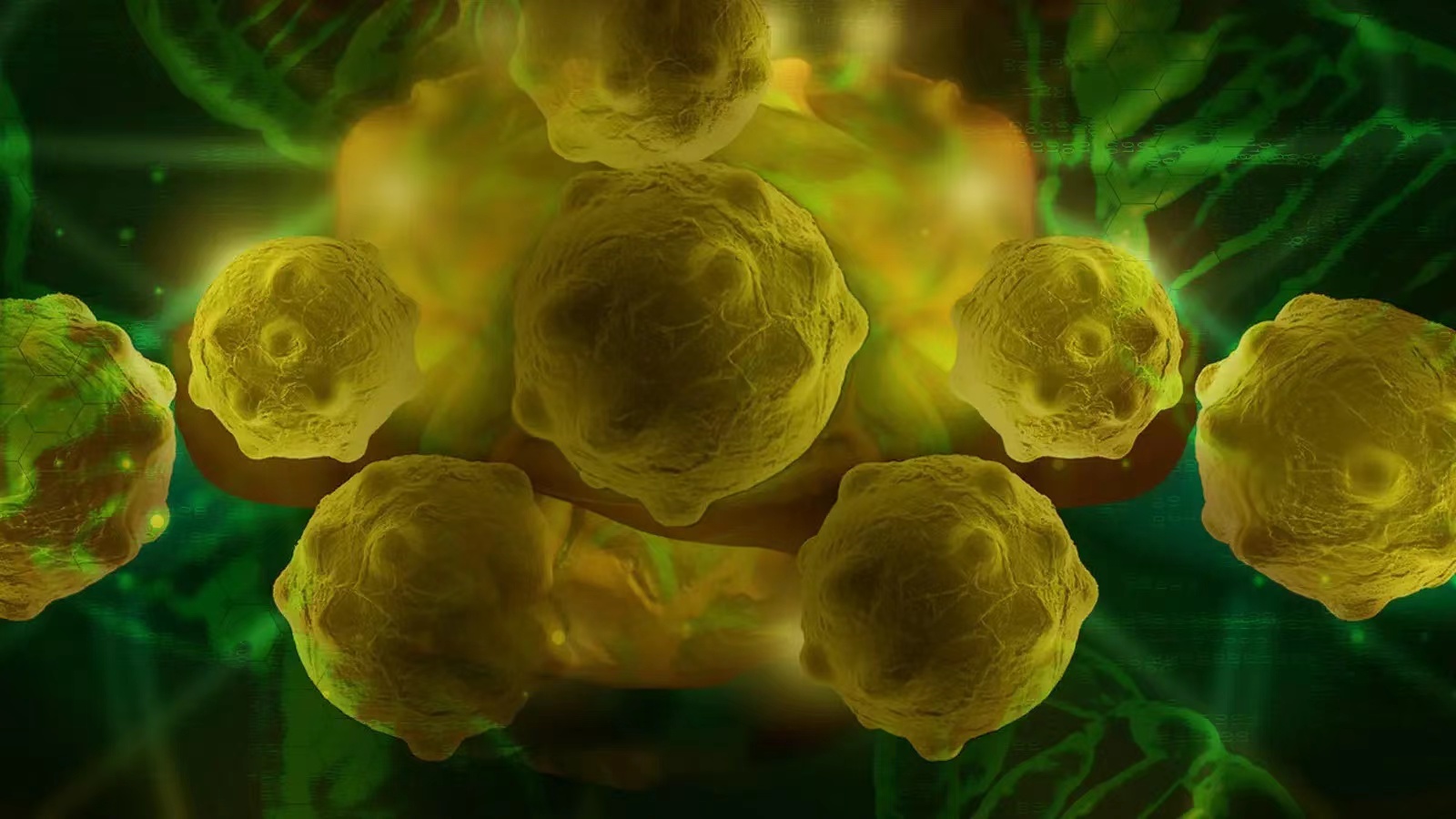创新背景
蛋白质对新陈代谢和细胞间通讯等许多生物过程都至关重要,但有些蛋白质还可以帮助癌症等疾病扩散和逃避免疫调节。传统的抑制这些不良分子的方法包括使用药物来阻止蛋白质的活性位点,当蛋白质在活性位点上工作时,其他细胞成分可以停靠在那里,通常是通过移动原子来实现。但这种阻塞策略并不完美;有时结合袋太浅,抑制剂脱落太快。其他时候,蛋白质的活性来自于它的物理特性,比如它的硬度,而不是来自于任何活性位点,所以阻断整个蛋白质的一小部分是不够的。在这种情况下,排出细胞中的蛋白质是唯一的选择。
创新过程
斯坦福大学的化学家开发了一种新的分子,它能将细胞表面或周围环境中不需要的蛋白质运送到溶酶体中,溶酶体是专门降解蛋白质的细胞腔。这些分子被称为溶酶体靶向嵌合体(LYTACs),它们的工作方式是选择性地给蛋白质贴上标签,从而决定其在细胞垃圾处理中的命运。这种选择性降解可以帮助研究人员研究和治疗癌症和阿尔茨海默病等疾病,这些疾病的病因与表面蛋白质有关。

蛋白质降解作为一种治疗策略,自从20年前PROTACs(即靶向嵌合体的蛋白质水解)的发展以来,尤其受到欢迎。PROTACs能够寻找并标记细胞内的蛋白质进行降解,已经在实验室和早期临床研究中取得了成功,但它们所依赖的降解途径是位于细胞膜上或细胞膜外的大约40%的蛋白质无法到达的。Bertozzi和Banik不认为某些蛋白质——以及疾病——是无法达到的。
使工具工作的关键是它的双功能设计。这种分子的一边可以定制,以结合任何感兴趣的蛋白质。另一边是一个短的氨基酸序列,或称为肽,点缀着一种叫做甘露糖-6-磷酸的糖。
这种糖可以作为细胞的记账标签。当细胞构建属于溶酶体的蛋白质时,它会附着这些糖以确保它们到达目的地。细胞表面有受体与这种糖衣相互作用,当它们抓住LYTAC分子并将其拉入细胞时,标记的蛋白质也随之被拖进细胞。

在将这个标签附着在蛋白质上时,LYTACs劫持了一种自然的细胞穿梭机制,将新合成的溶酶体蛋白质护送到它们的新家。但是,尽管溶酶体的蛋白质足够坚韧,它们在溶酶体中遇到的降解酶能够存活下来,但大多数蛋白质却不能,所以那些被LYTAC方法标记的蛋白质通常会被破坏。
斯坦福大学的研究人员表明,在细胞中,它们可以靶向并降解在阿尔茨海默病和癌症中重要的蛋白质。根据他们的说法,LYTAC的蛋白质系结末端可以是任何与蛋白质结合的东西,比如抗体或现有的药物,所以在未来,许多其他蛋白质和疾病都可以被攻击。
创新价值
利用蛋白质降解策略,不仅可以扩大药物的范围,还可以改进现有的治疗方法。
创新关键点
化学家开发了一种新的分子,它能将细胞表面或周围环境中不需要的蛋白质运送到溶酶体中,溶酶体是专门降解蛋白质的细胞腔。
Innovative molecular scalpel to remove unwanted proteins from the surface of cells
Chemists at Stanford University have developed a new molecule that delivers unwanted proteins from the cell surface or its surrounding environment to lysosomes, cellular cavities that specialize in degrading proteins. These molecules, called lysosomal targeting chimeras (LYTACs), work by selectively labeling proteins to determine their fate in cellular waste disposal. This selective degradation could help researchers study and treat diseases such as cancer and Alzheimer's disease, whose etiologies are linked to surface proteins.
Protein degradation as a therapeutic strategy has gained particular popularity since the development of PROTACs, or proteolysis targeting chimeras, 20 years ago. PROTACs, which seek out and label proteins inside cells for degradation, have been successful in laboratory and early clinical studies, but they rely on degradation pathways that are inaccessible to about 40 percent of proteins located on or outside the cell membrane. Bertozzi and Banik dismiss the idea that certain proteins -- and diseases -- are unreachable.
The key to making the tool work is its dual-function design. One side of this molecule can be customized to bind any protein of interest. On the other side is a short sequence of amino acids, or peptides, interspersed with a sugar called mannose-6-phosphate.
The sugar acts as a bookkeeping label for cells. When a cell builds proteins that belong to lysosomes, it attaches these sugars to make sure they reach their destination. There are receptors on the cell surface that interact with the icing, and when they grab the LYTAC molecule and pull it into the cell, the labeled protein is dragged in with them.
In attaching this tag to the protein, LYTACs hijack a natural cell-shuttle mechanism to escort newly synthesized lysosomal proteins to their new home. But although the lysosomal proteins are tough enough that the degrading enzymes they encounter in lysosomes survive, most proteins do not, so those labeled by the LYTAC method are generally destroyed.
In cells, they can target and degrade proteins important in Alzheimer's disease and cancer, researchers at Stanford University showed. According to them, the protein-bound end of LYTAC can be anything that binds to a protein, such as an antibody or an existing drug, so many other proteins and diseases could be attacked in the future.
智能推荐
CD8α蛋白有助于T细胞休眠,减少其凋亡
2022-08-04涉及学科涉及领域研究方向间歇性禁食通过改变肠道菌群活性促进神经元轴突再生
2022-08-08这项研究发现间歇性禁食能够改变肠道菌群活性,促进3-吲哚丙酸(IPA)的产生,从而显著增强轴突再生。同时,该研究首次证实肠道菌群的代谢产物(例如3-吲哚丙酸)通过免疫介导机制促进感觉轴突再生和功能恢复的能力,是神经元轴突再生所必需的。
涉及学科涉及领域研究方向生物研究者通过获取肿瘤特异性肽开发癌症治疗新技术
2022-09-01研究创造性地将胸腔积液用于确定HLA结合肽库的科学用途,从胸腔积液中获取肿瘤肽的能力或许可以为晚期癌症的治疗开辟新的途径。
涉及学科涉及领域研究方向靶向tau可减轻肌萎缩侧索硬化症中的线粒体碎裂
2022-06-28麻省总医院神经退行性疾病研究所 Healey ALS 中心的神经遗传学实验室主任 Ghazaleh Sadri-Vakili 博士和她的同事研究了这种异常 tau 蛋白与 DRP1 之间的相互作用是否也会促进渐冻症的线粒体功能障碍,以及减少 tau 蛋白是否可以成为对抗渐冻症的一种新的治疗方法。该研究提供了对肌萎缩侧索硬化症(ALS)既渐冻症发病背后机制的更好理解,并指出了潜在的治疗策略。
涉及学科涉及领域研究方向